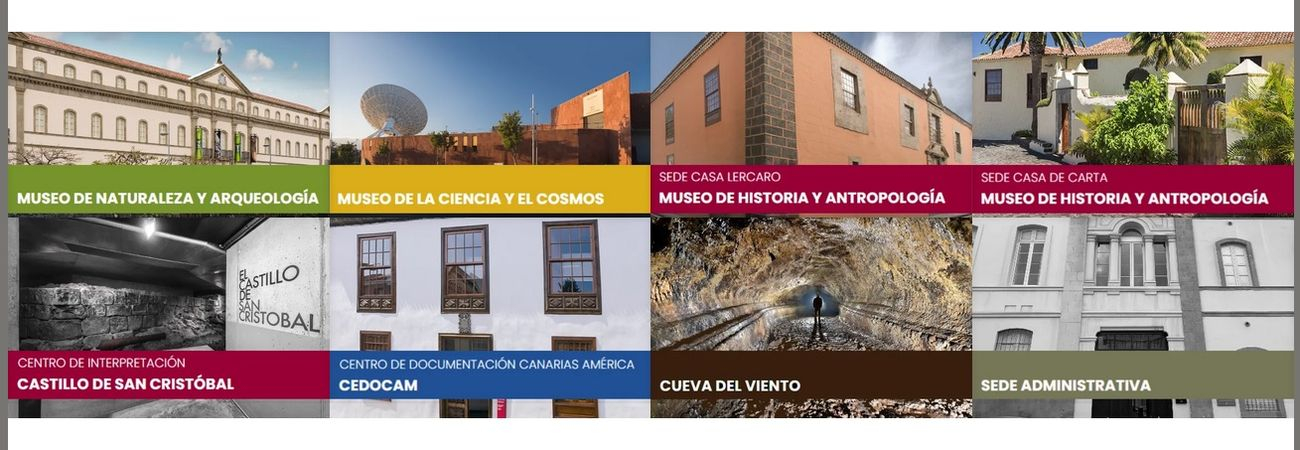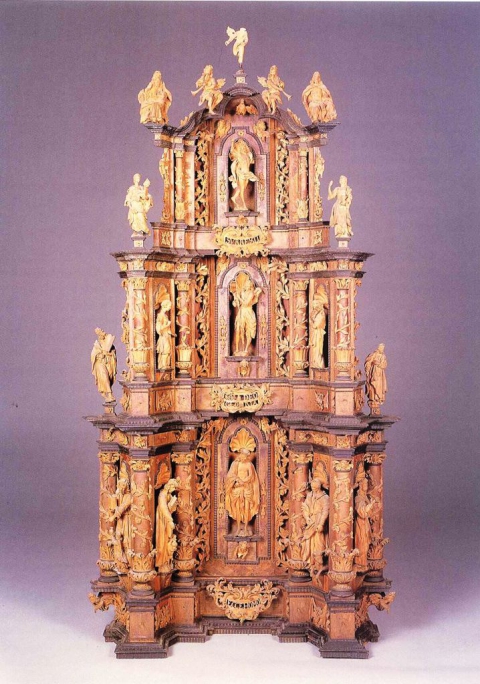The Montemayor Altarpiece
The Montemayor Altarpiece
Unknown, 18th century
Carved and painted wood - 105 x 52 x 24 cm
Museum of Religious Art
Church of Nuestra Señora de la Peña de Francia (Puerto de la Cruz)
The Montemayor Altarpiece, which has a monumental air despite its small size, originally belonged to the local convent of Santa Catalina. Although the convent was burned down in 1925, the altarpiece was saved, and brought to its current home at the Museum of Religious Art in the church of Ntra. Sra. de la Peña de Francia. In 1964 it was restored by local sculptor Ezequiel León Domínguez, who was born in La Orotava.
The altarpiece takes its name from the man who donated it: the cavalry captain Juan de Montemayor. The first reference to the piece is found in Annals of Puerto de la Cruz of La Orotava, written by the illustrious local figure Álvarez Rixo; he mentions one Juan de Montemayor, a native of Seville and a "Cavalry Captain", who came to Tenerife and took up the post of Treasurer at the Royal Customs House in Puerto la Cruz.
Alfonso Trujillo, an expert on altarpieces of the Canary Islands, considered this piece to be particularly outstanding. There are, however, no references at all to its origins, although specialists in the field have argued that it was probably imported from the Americas, which would explain why it is made from boxwood. This particular type of wood is both durable and easy to work, making it highly suitable for carving intricate sculptural figures.
Although Trujillo classified the Montemayor altarpiece as Rococo style and Martínez de la Peña classified it as Baroque style, in actual fact its iconography is unique, featuring a pedestal and three main sections, the uppermost of which is laid out in the shape of an attic. The narrative of the altarpiece begins at the bottom, on the pedestal, which bears the inscription Ecce Homo. This alludes to the main section of the piece, featuring a small figure (barely 16 cm tall) flanked by the four Evangelists, each with their corresponding accoutrements. The second section features Saint John the Baptist, the patron saint of the donor Juan de Montemayor, with a martyred saint on either side. Finally, the third and topmost section is crowned with a representation of Christ Resurrected, with the corresponding inscription. Alongside Jesus are allegorical representations of Charity and Faith, and next to them seated depictions of Christ in his heavenly glory and God the Father. All around the altarpiece are carvings of angels and cherubs and a variety of different plants. Trujillo argued that these elements are iconographically related to the sections in which they appear; namely, Passion, Testimony, Resurrection and Glory.








